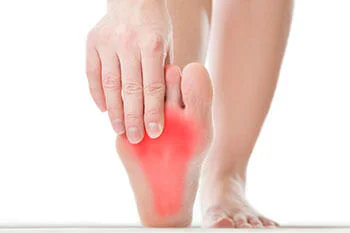Table of Contents
What is Pediatric Flatfoot?
Pediatric flatfoot is a common but highly variable condition.
A flatfoot, or pes planus, is a condition in which the longitudinal arch of the foot does not develop normally and is lower or flatter than expected. It is often misunderstood and misconstrued as a deformity that should always be corrected. This is not true in all cases. There is a distinct difference in the painful vs. the non-painful flatfoot. The pediatric flatfoot is usually inherited but other conditions such as a tarsal coalition should be ruled out.
Non-Surgical Treatment
As most flatfoot conditions are self-limiting and non-progressive, treatment is often based on management of mild aching symptoms in the feet and proper shoe gear selection with good supporting arches. Some over-the-counter arch supports will adequately support the arch of the foot. If this fails, custom devices, known as custom orthotics, can be fabricated to control the excess motion of the flatfoot as well as properly support the fallen arch. This will often help alleviate symptoms such as arch pain, heel pain, aching legs, foot fatigue by reducing the excess stress on tendons and joints. Stretching the calf muscle can also be beneficial in some cases.
Surgical Treatment
The painful flatfoot is more difficult to manage and may even require surgical treatment. The painful flatfoot usually defies conservative care. Although the measures mentioned above for the non-painful foot are often tried, the painful flatfoot continues to be painful and can be limiting to daily activities despite attempted care. This may be seen with a very tight heel cord (Equinus) and collapse of the arch that cannot be lifted adequately with arch supports. These situations often call for surgical care such as a gastrocnemius recession, reconstruction of the arch bones and straightening of the heel.
When in doubt as to the underlying cause of the flatfoot, it is often best to seek the advice of a foot and ankle specialist. Early intervention can often mean the difference between long-term complications and disability and the full return of activity without pain.
What to Do Next?
Our clinic specializes in the conservative and surgical treatment of pediatric flatfoot.
Contact us today to schedule an appointment.


